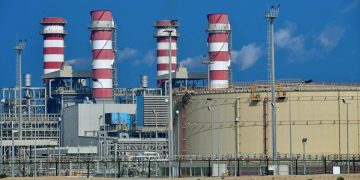Brent and WTI trends post-OPEC+ production news
The global oil market is entering a new phase in 2025. After several years of post-pandemic volatility and supply chain realignments, crude prices have resumed an upward trajectory, catching many market participants off guard. At the heart of this rally are renewed OPEC+ production cuts announced in early 2025, aimed at reasserting control over a market that had been showing signs of oversupply late last year.
Brent crude, the global benchmark, surged past $95 a barrel in Q2 2025, while WTI followed closely, hovering near $91. This sharp rally has reignited inflationary concerns and forced asset allocators to revisit their commodity assumptions. The driver of these prices isn’t just supply cuts—it’s the alignment of strategic production discipline with a resurgence in demand from China, India, and Southeast Asia, as their industrial sectors pick up pace again.
Moreover, non-OPEC supply—especially from U.S. shale basins—has shown a slower-than-expected response to higher prices. Capital discipline among American producers, driven by shareholder demands and ESG pressure, has restrained output even in the face of attractive margins. This shift marks a structural change from the past, where shale would flood the market at the first hint of a rally.
With geopolitical uncertainties still looming—from Red Sea shipping threats to Russian pipeline constraints—the current oil pricing environment is not simply a supply-demand story. It is one layered with energy security calculations, geopolitical leverage, and shifting power dynamics among producers. All of this contributes to an environment where $100 oil no longer feels improbable—it feels strategic.
Winners: energy, shipping, EM exporters
The beneficiaries of rising oil prices are emerging quickly, and they span multiple sectors and regions. Energy producers are the most obvious winners. Oil majors like ExxonMobil, Shell, and Aramco are experiencing margin expansion, cash flow surpluses, and stronger investor interest as dividend and buyback programs expand. For these companies, high oil prices translate directly into higher returns and a renewed sense of relevance in a global economy that still needs hydrocarbons.
Beyond the producers, shipping companies are enjoying pricing power in freight rates—especially in energy transport and LNG. Tanker rates have surged, and shares of logistics firms with exposure to maritime crude flows are outperforming the broader transportation index. As demand for oil increases, so does the need for safe and reliable transport, particularly from the Gulf and West Africa to Asia.
Emerging market (EM) oil exporters are also gaining renewed interest from global investors. Countries like Brazil, Nigeria, and Saudi Arabia are seeing stronger trade balances and improved fiscal positions. For EM-focused funds, this has opened the door to reweight portfolios toward commodity-rich geographies. Sovereign bond spreads are narrowing, currencies are strengthening against the dollar, and local equity indices are showing signs of decoupling from broader EM weakness.
In particular, Gulf nations are reinvesting oil windfalls into sovereign wealth funds and domestic infrastructure, creating a cycle of stimulus that spills over into construction, finance, and services. These internal investment booms are giving global investors not just an oil play—but a multi-sector growth thesis built on high commodity prices.
Losers: airlines, manufacturing, consumer staples
However, every rally has its victims. Rising oil prices are hitting energy-intensive sectors hard—especially those with limited pricing power or long-duration cost exposures. Airlines are among the most immediate casualties. Fuel accounts for a major portion of operating costs, and even hedging strategies offer only partial protection in prolonged high-price regimes. Already, global airline stocks are lagging indices, and route optimization, price hikes, and capacity reductions are being announced in response.
Manufacturing firms are also under pressure, particularly in developed markets where cost inflation is difficult to pass on to customers in a sluggish demand environment. Heavy industries such as steel, cement, and autos are seeing margin compression, especially those reliant on diesel-based logistics or energy-intensive production processes. The longer oil remains elevated, the more strategic shifts—such as relocating production or adopting automation—may be considered.
Consumer staples are another under-the-radar victim. While these companies often operate in defensive sectors, the double-hit of input cost inflation and weakening consumer demand in mature markets is eroding earnings stability. Packaged food and household goods manufacturers are seeing transportation costs rise just as consumers are becoming more price-sensitive. This combination squeezes operating leverage and makes these companies less attractive relative to other defensive plays.
Retailers, particularly discount and volume-driven chains, are also vulnerable. Higher logistics and energy costs eat into margins at a time when shoppers are already stretched by core inflation and housing costs. Some may pass along costs, but the risk of volume decline makes that a dangerous strategy.

Portfolio strategies to rebalance commodity exposure
The 2025 oil price environment presents both risks and opportunities for investors looking to rebalance portfolios. The first and most obvious move is increased allocation to energy equities—not just majors, but also midstream and upstream firms with high operating leverage to rising prices. Exposure to oilfield services companies like Halliburton and Schlumberger can provide cyclical upside in a sustained rally.
Beyond equities, investors are revisiting commodity ETFs, including those tracking Brent crude, WTI, and diversified energy baskets. These instruments offer liquid, targeted exposure to commodity moves without the idiosyncratic risks of single-stock picks. For institutional portfolios, exposure through commodity-linked notes or futures strategies is also regaining traction.
Fixed income positioning is also being re-evaluated. EM bonds from oil-rich nations are becoming more attractive as spreads narrow and fiscal outlooks improve. Local currency debt from these markets, once deemed too volatile, now offers yield and currency upside. Meanwhile, debt from oil-importing nations is being scrutinized more closely due to rising current account pressures and tighter monetary policy paths.
Real assets—such as infrastructure and real estate—are also becoming more interesting under the oil price dynamic. Energy infrastructure assets, particularly pipelines and LNG terminals, are generating stronger cash flows and can act as inflation hedges. Real estate in oil-exporting regions is benefiting from fiscal stimulus and foreign investment, while select REITs with low energy exposure are serving as safe havens.
On the defensive side, portfolio managers are cutting exposure to sectors vulnerable to cost inflation without pricing power. Airlines, consumer staples, and manufacturing heavyweights are being pared down or hedged with options. Sector-neutral strategies are being layered with macro overlays tied to crude benchmarks, providing downside protection without full exit.
Some sophisticated investors are turning to volatility as a hedge. The oil price resurgence has increased cross-asset correlation and implied volatility. Trading volatility products, or using it to overlay commodity-sensitive portfolios, is an increasingly popular strategy. Funds that offer exposure to both inflation hedges and growth assets—such as multi-asset absolute return funds—are gaining favor among institutions.
Conclusion
The oil rally of 2025 is not just another commodity cycle—it’s a structural reshaping of global capital flows and sector leadership. Brent and WTI prices, now pushing decade highs, are altering the landscape for everything from EM sovereigns to retail profit margins. For global investors, the lesson is clear: staying static in a shifting oil regime is not an option.
Portfolio rebalancing in this environment requires an understanding of the winners and losers, a tactical toolkit that includes both physical commodities and derivative instruments, and an active approach to risk management. Those who adapt quickly will find new alpha opportunities; those who don’t may find themselves exposed to a rising tide they didn’t see coming.


































